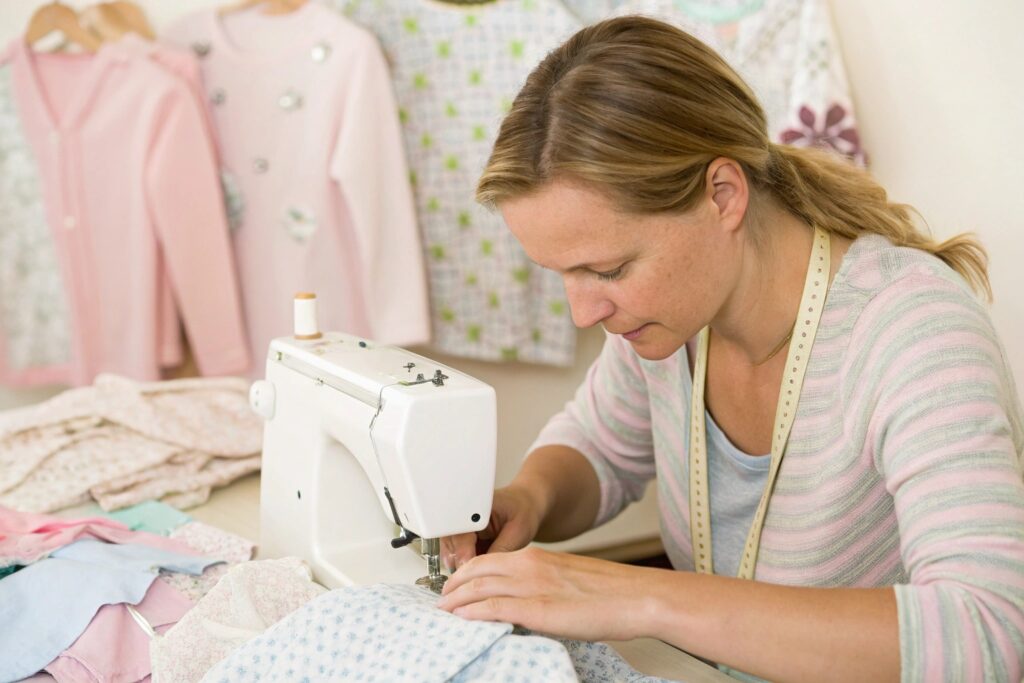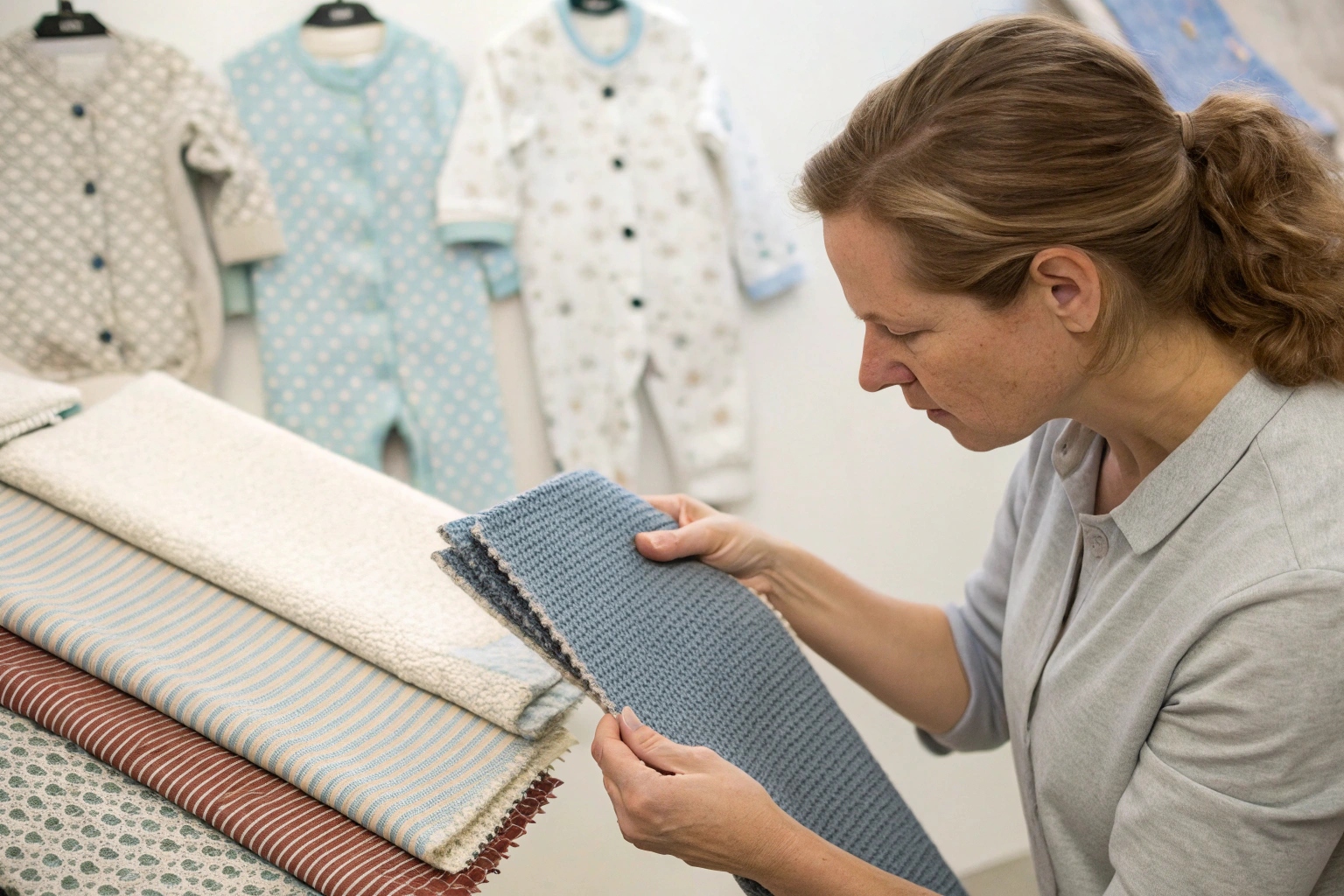The terms "textile" and "clothing" are often used interchangeably—but in fashion and manufacturing, they mean very different things.
A textile refers to any woven, knitted, or non-woven fabric material, while clothing refers to finished garments that have been designed, cut, sewn, and styled for wear.
Let’s break down the difference, how textiles become clothing, and why this matters if you’re in the apparel business.
What Defines a Textile vs. a Finished Garment?
Understanding the basic distinction helps avoid confusion during product development, sourcing, and production.
A textile is a material made from fibers through processes like weaving, knitting, or felting; clothing is the finished, wearable product made by cutting and assembling textiles into specific shapes and sizes.

Clear definitions:
| Term | Definition |
|---|---|
| Textile | Any flexible material made by interlacing yarns, fibers, or threads |
| Clothing | Garments or apparel items made from textiles, ready for people to wear |
In short:
Textile = material
Clothing = product
Examples:
- A bolt of cotton fabric = textile
- A baby romper made from that cotton = clothing
How Textiles Are Processed into Wearable Clothing?
Turning raw fabric into a cute dress, a cozy hoodie, or a tailored jacket involves several critical steps.
Textiles are processed into clothing through a series of steps including pattern making, cutting, sewing, trimming, and finishing to create garments that fit human bodies and meet specific aesthetic and functional goals.

Typical process flow:
| Step | What Happens |
|---|---|
| Pattern making | Templates designed based on sizing and style |
| Fabric cutting | Textiles are cut into garment parts (e.g., sleeves, bodices) |
| Sewing and assembly | Pieces are stitched together to form full garments |
| Adding trims and accessories | Buttons, snaps, labels, zippers are attached |
| Pressing and finishing | Garments are ironed, checked, and prepared for packing |
This transformation is why factories specializing in textile production are different from those specializing in garment production.
Some large manufacturers handle both—but many focus on just one part of the supply chain.
Common Types of Textiles Used in Apparel Production?
Not all textiles are suitable for clothing. Apparel textiles must balance comfort, durability, breathability, stretch, and sometimes fire resistance—especially for kidswear.
Common textiles used for clothing production include cotton, polyester, rayon, linen, wool, silk, and blends combining natural and synthetic fibers for better performance.

Popular textiles in fashion:
| Textile Type | Key Properties |
|---|---|
| Cotton | Soft, breathable, easy to dye |
| Polyester | Durable, wrinkle-resistant, cost-effective |
| Rayon (Viscose) | Drapes beautifully, soft and silky feel |
| Linen | Lightweight, breathable, perfect for summer |
| Wool | Warm, insulating, moisture-wicking |
| Silk | Luxurious texture, natural sheen |
| Cotton-polyester blends | Combines softness with easy-care durability |
Specialty babywear often uses:
- Organic cotton
- Bamboo viscose
- Modal
- Cotton-spandex blends (for stretch and softness)
Choosing the right textile impacts not only the garment’s comfort but also its compliance with safety standards.
Why Understanding Textiles Matters in Fashion and Manufacturing?
If you want to design, produce, or sell clothing successfully, understanding textiles is non-negotiable.
Understanding textiles matters because fabric properties—like stretch, shrinkage, weight, and chemical content—directly impact design choices, production methods, compliance requirements, and customer satisfaction.

Why textile knowledge is critical:
| Reason | How It Impacts Apparel Business |
|---|---|
| Better fabric sourcing | Choose materials that match your product goals |
| Accurate costing | Predict material yield, waste, and costs accurately |
| Quality control | Know what to inspect for flaws or defects |
| Safety and compliance | Meet CPSIA, REACH, OEKO-TEX® standards |
| Stronger brand differentiation | Offer comfort, performance, and sustainability features |
Example:
If you don’t know that rayon shrinks after washing unless treated properly, you could end up with a collection full of returns and unhappy customers.
At Fumao, we help brands choose textiles that balance price, performance, and safety—especially for sensitive categories like babywear.
Conclusion
The difference between textiles and clothing is simple: textiles are the raw materials, clothing is the finished product. But understanding how textiles work—and how to choose the right ones—is essential for anyone serious about building a reliable, sustainable, and successful fashion brand.










